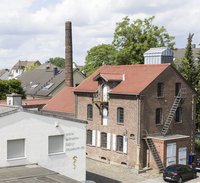Das Bild zeigt das den Sektionssaal der Universität Leiden. Bei einem Anatomischen Theater handelt es sich um einen Hörsaal, dessen Bänke tribünenartig um einen Schautisch herum angeordnet sind, auf dem Sektionen von Leichen zu Schulungszwecken stattfinden. Es stammt von Giuseppe Felosi und wurde erstmals 1742 gedruckt.
Die Darstellung ähnelt der Version von Jan Cornelisz. van 't Woudt (Johannes Woudanus) und Willem Swanenburgh von 1610.
Die Perspektive ist gleich und auch hier befinden sich Skelette von Menschen und Tieren auf den Zuschauerrängen.
Allerdings ist der Sektionstisch in der Mitte leer, während in der Ansicht von 1610 eine geöffnete Leiche während einer Sektion zu sehen ist.
en

